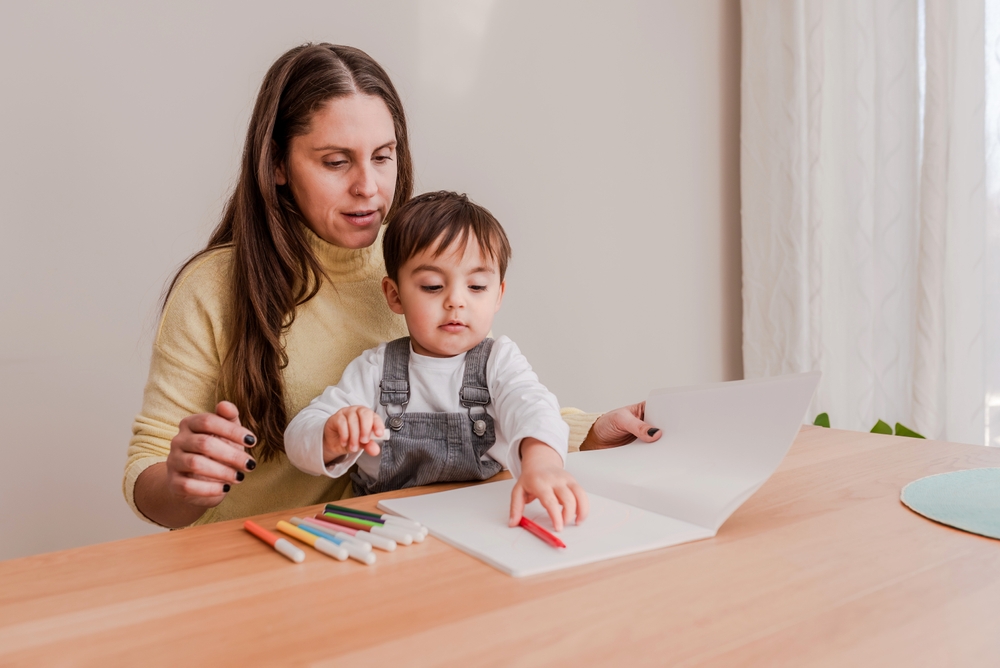Every parent dreams of creating the perfect set of household rules—ones that keep everyone respectful, organized, and happy. The problem is that real family life rarely goes as planned. Many family rules that start out strong eventually crumble under the weight of busy schedules, shifting moods, or simple inconsistency. What begins as a well-intentioned plan to bring order often turns into a daily debate. Understanding why certain rules fall apart can help families reset expectations and build structure that actually lasts.
1. No Screens During Dinner
It’s one of the most common family rules that start out strong, but it often doesn’t last long. Parents may start with enthusiasm, hoping to create more face-to-face time and meaningful conversation. Then comes a “just this once” exception for checking a message or showing a funny video. Before long, everyone’s scrolling while the food gets cold. To make this rule work, consistency is key—turn devices off completely or move them to another room before dinner begins.
2. Everyone Pitches In With Chores
At first, this rule sounds fair: everyone does their part to keep the home clean and running smoothly. But enthusiasm tends to fade when reminders turn into arguments or when chores aren’t done “the right way.” Parents may find it easier to just do the task themselves rather than enforce the rule. Eventually, resentment builds as responsibilities fall unevenly. A better approach is assigning age-appropriate tasks and sticking to a routine, even if things aren’t done perfectly.
3. No Yelling in the House
Many families vow to keep a calm, respectful tone during disagreements, but emotions can quickly derail that plan. When stress, exhaustion, or frustration take over, even the most patient parent might slip up. Once yelling becomes common again, the rule loses credibility. The problem isn’t the rule itself but the lack of built-in repair—apologizing, calming down, and trying again are just as important as setting limits. Reinforcing emotional regulation through example teaches far more than a rule alone.
4. Early Bedtimes for Everyone
Parents often start the school year determined to keep bedtime structured and consistent. It works beautifully for a few weeks—until after-school activities, late homework, or social events creep in. Soon bedtime slides later and later, and mornings become chaotic again. Children thrive on predictable routines, so keeping bedtime realistic rather than rigid helps maintain balance. Adjusting schedules seasonally or by age can also prevent burnout for both kids and parents.
5. We Always Eat Together as a Family
Sitting down for a family meal every night is a wonderful goal, but it’s one of those family rules that start out strong and then fade when life gets hectic. Between sports practices, work schedules, and homework, coordinating everyone’s time becomes nearly impossible. Parents might begin eating with one child while another eats later, and soon the habit disappears. The intention—connection—can still be met by having smaller, meaningful moments throughout the week. A few shared meals matter more than daily perfection.
6. Weekend Family Time Is Sacred
Many families declare weekends off-limits for work, errands, or outside distractions, focusing on bonding instead. This rule feels great until real life intervenes with deadlines, playdates, or home repairs. What starts as a tradition can quickly turn into guilt when the family can’t stick to it. Instead of forcing rigid “family days,” schedule shorter, more flexible activities like a Sunday breakfast or a family walk. Quality time matters more than the amount of time.
7. Homework Gets Done Before Play
Every parent sets this rule at least once, but enforcing it consistently is a challenge. Kids argue that they “just need a break,” and parents—tired from work—often give in. Once the exception becomes routine, homework gets pushed to the last minute, creating stress for everyone. The key is balance: allowing short play breaks before homework can actually improve focus and motivation. Turning the rule into a flexible rhythm instead of an absolute law helps it stick long-term.
8. No Sweets Except on Weekends
It sounds like a smart plan to limit sugar intake and promote healthy habits, but it’s one of the family rules that start out strong and quickly unravel. Birthday parties, school events, and spontaneous treats make strict sugar bans hard to maintain. Children may also develop unhealthy relationships with food when sweets become a forbidden prize. Teaching moderation—rather than complete restriction—creates a healthier, more sustainable mindset. Occasional indulgence can fit within balanced nutrition.
9. Always Use Kind Words
Every parent hopes to raise kind, respectful communicators, and this rule embodies that goal. But in moments of sibling rivalry, hurt feelings, or exhaustion, “kind words” can fly out the window. Correcting tone and language constantly can also create tension if done harshly. Modeling patience, forgiveness, and gentle correction helps kids internalize kindness rather than fear punishment for mistakes. The rule works best when reinforced with empathy and positive examples.
Why Rules Fail—and What That Really Teaches Kids
When family rules that start out strong end in chaos, it’s not always a sign of failure. It’s proof that real life is messy and that growth requires flexibility. Kids learn more from seeing their parents adapt, communicate, and recommit than from rigidly following every rule. What matters most is consistency in values—kindness, respect, and accountability—rather than perfection in enforcement. A family that can laugh at its own chaos often ends up the strongest of all.
Which family rules that start out strong have caused chaos in your home? Do you stick to them or adapt as you go? Share your stories in the comments below!
What to Read Next…
9 Unwritten Playground Rules That Cause Real Conflict
Do Family Screen Time Rules Invite Emotional Manipulation?
Hidden Impact: 6 Family Secrets Affecting Child Behavior for Years









